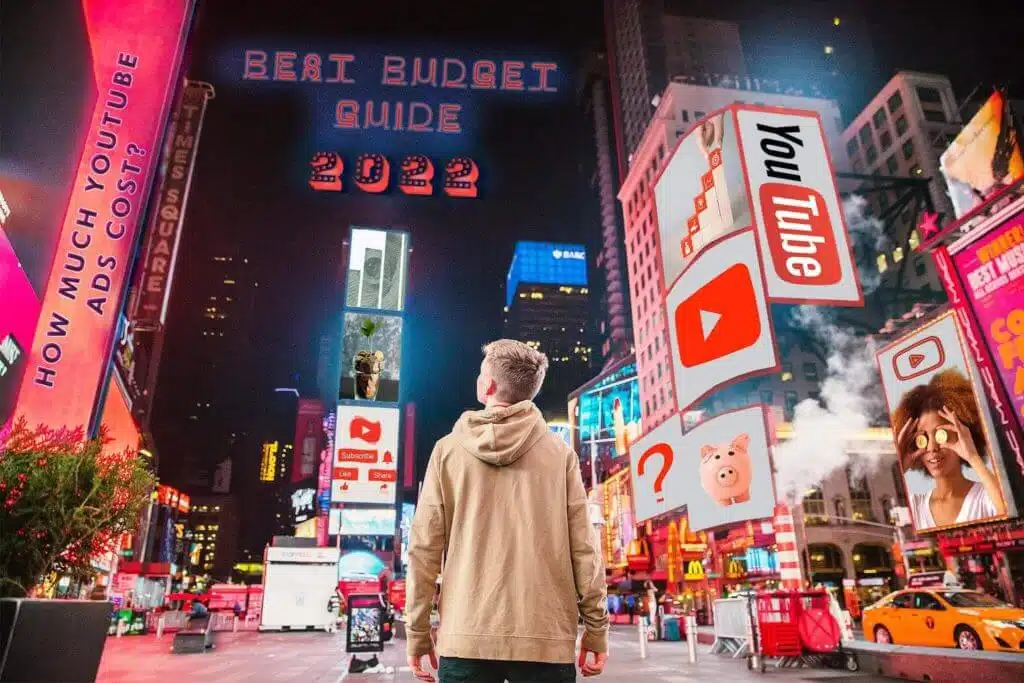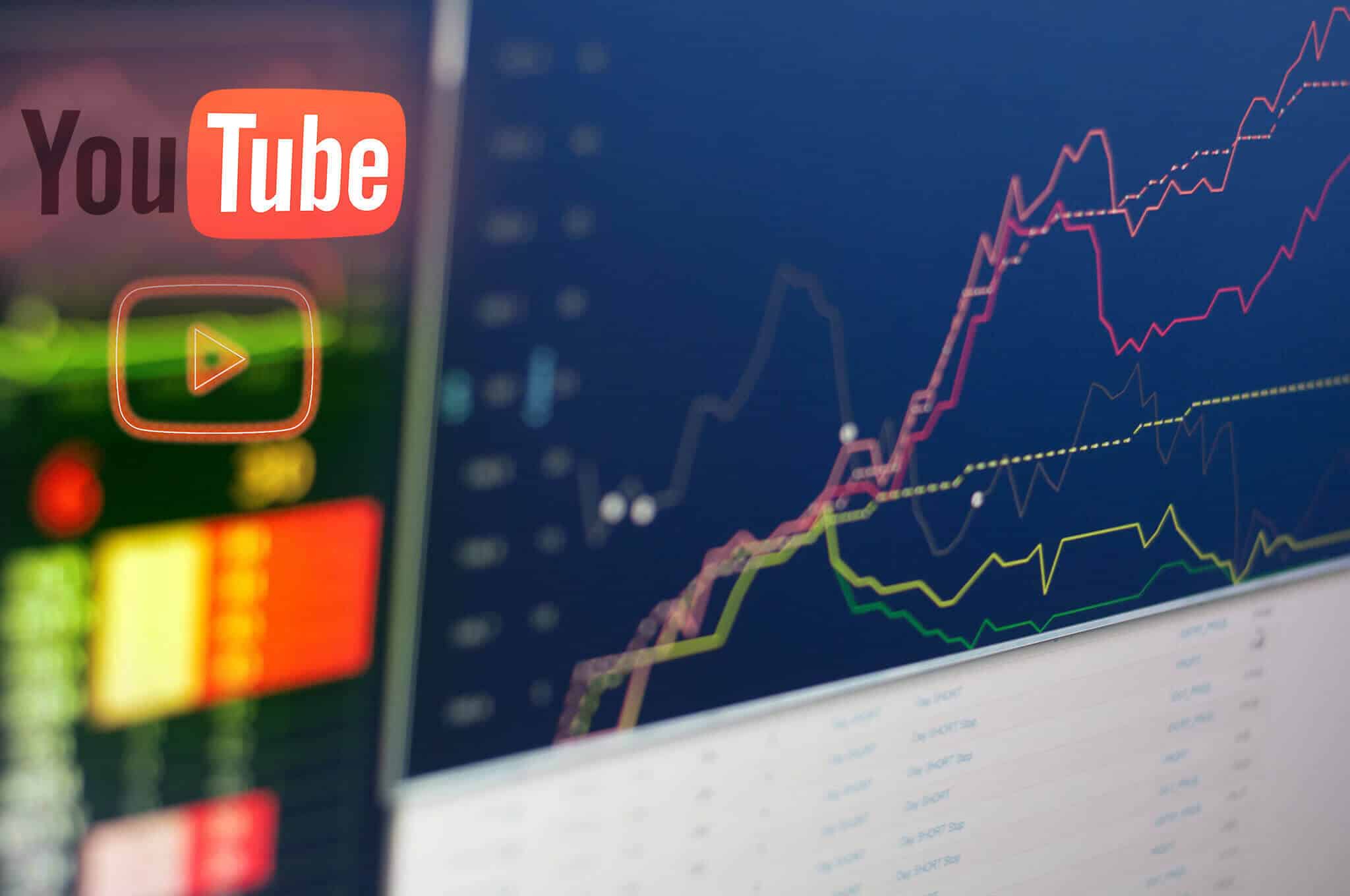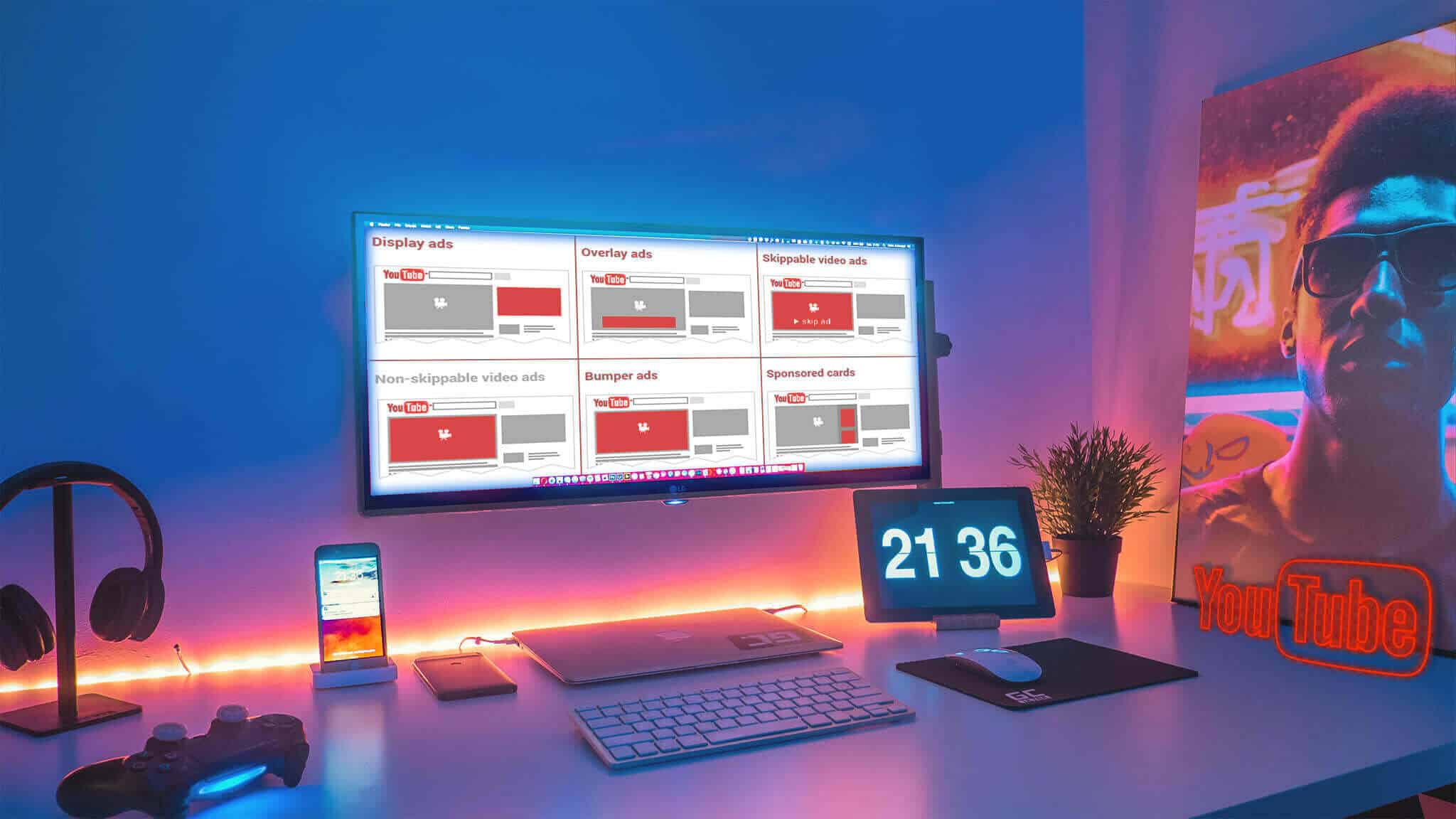
Leveraging Music Analytics for Better Promotion
In the modern digital era, the music industry has witnessed a significant shift in how music is created, distributed, and consumed. With this transformation comes the need for effective promotion

According to Statista, YouTube ads revenues have increased yearly from $8.1 billion in 2017 to $19.1 billion in 2020. The service has grown in popularity over the last decade, and this is mainly because of the sales benefits it provides. This is why you should know how much YouTube ads cost and how you can get value for your money.

The cost of advertising on YouTube usually ranges from $0.10 to $0.30 per click or view. It is an expected rate, not set in stone. This is because of the many factors that tend to affect ad prices. A typical YouTube ad’s price depends on your campaign’s goals, the people you are trying to reach, video quality, and a few other things.
These are the factors that impact YouTube ads cost:
YouTube ads are not only those that play somewhere within the video a person on the platform may be watching.
They also exist as bumper ads and overlay ads, depending on where they show up after a search. These ads also have different kinds of formats. People can be forced to watch an advert in full due to no skipping option, or they can simply skip the ad. This article will explore the YouTube ad types later to help you understand them better.
YouTube allows you to pay as much as you want to when running ads on the platform. This is the bid amount, and you will never be charged more than what you set for it.
There are two options available to you when setting a bid amount.
For the first option, you can set a daily bid that acts as a budget for each day that your campaign is running.
For this method, you are more concerned about getting your campaign to run for a specific number of days, so you tune your total campaign budget to last for those number of days with a daily bid amount.
The second option is more concerned with how much you are willing to spend in total for your campaign. How long the campaign lasts does not concern you so much.
To help you understand this better, suppose you have a budget of $10 to spend on an ad. Now, if you decide that you want your campaign to last for 5 days, that means you will have to set a daily bid amount of $2. This will ensure that your $10 budget runs a campaign that lasts for 5 days. With this, Google stops running your ad immediately after you exhaust your $2 budget within a day.
If you set just the campaign total without a daily bid amount, Google doesn’t halt your campaign until your budgeted amount is exhausted. This can be within an hour or in 10 days.
With a set bid amount, you can then try to figure out the bidding strategy to use. You can use a reserved bidding strategy or auction. This will also be explained further in this article.
One of the YouTube ad bidding strategies, auction, is based on the concept of competition. The number of people who compete to get their ads shown to a specific audience can drive up the cost of placement. Demographics, keywords, etc., all contribute to defining a target audience even better to impact competition and consequently affect cost.
Now it would be a bad idea if competition determined everything. It does not, and Google ensures that ad relevance has as much influence over cost as the bidding process. The ad space is therefore not always awarded to the highest bidder.
The relevance of your YouTube ad is inversely related to the cost. If your ad is relevant enough, the cost of running them will reduce. Therefore, you should tune all your creative processes to ensure that your ad is optimized well enough.
The quality of your video ads should be high definition and pixel-perfect regardless of the screen size. YouTube gives some level of relevance to videos that maintain very high quality on different screens.
Finally, festive seasons have an impact on YouTube ads cost. Many brands put up ads during festive seasons, which affects relevance scores and increases the YouTube ads cost.
If your ad’s message factors in the holidays, you can keep your relevance score up and costs low even regardless of the season’s price hike.

As already mentioned, an ad’s type affects its cost. This section explores the different formats and how each of them affects the cost of your ad on the platform.
These are video ads shown to people watching a video on YouTube. They can appear anywhere before, during, or after content a viewer watches in the video player. Viewers are allowed to skip these ads after they have played for 5 seconds.
Non-skippable videos have almost every characteristic of skippable videos. The only difference is that they do not allow viewers to skip, forcing them to watch the ad fully. Since viewers have to watch the videos in full, YouTube requires that such videos have a maximum length of 15 or 20 seconds, depending on regional standards.
These are ads that get played within a video being viewed on YouTube. It is the most common method by which ads are placed.
Google recently updated the definition of a ‘view’ to mean viewers watching at least 30 seconds of your ad or the full length if it is shorter than 30 seconds. This is known as TrueView.
The definition also includes video interactions such as clicking on cards, call-to-action overlays (CTAs), companion banners, or video thumbnails. This ad type is categorized into in-stream ads and video discovery ads.
TrueView in-stream ads are skippable videos that appear in the content of other videos and usually have CTAs attached to them to encourage engagement and conversions.
TrueView video discovery ads, on the other hand, get shown in search results, on homepages, or in related video sections. YouTube shows them to people that fit the target audience you specify. This increases their chances of being viewed.
Bumper ads are short ads that are shown just before a video plays. They are up to 6 seconds long and non-skippable. They are shown on PCs, mobile devices, TVs, and game consoles.
Some ads appear only when you are using a desktop, and overlay ads are one of them. They show up overlaid on the lower side of videos your target audience will be watching.
These are reserved for sponsorship campaigns only and are not available on Google ads. However, you can still create Image ads to appear as an overlay ad on YouTube.
These ads also appear only on Desktop screens. They show up at the top right column of your screen just above the list of videos showing up next.
Cards pop up as overlays on videos playing on YouTube. Viewers can either click through or close it, so it doesn’t interrupt whatever they are watching. You can purchase such cards to get your ads placed on a video you feel is related to whatever campaign you are running.

When bidding for ad placement on YouTube, you can either do reserved bidding or participate in an auction bid.
For reserved bidding, you get to reserve a placement instead of using Google Ads auction. This allows you to buy impressions at a fixed rate but tends to cost more.
Auction bids that are more popular offer you many other options. There are many tricks or strategies you can learn to help you manipulate the cost of the ad placement you are
bidding for. To successfully implement them, you should have a firm grasp of the concepts below:
The maximum YouTube ads cost per view is the highest bid amount you are prepared to pay for each view your ad gets.
Apart from the maximum amount you want to pay for each view your ad gets, you can also specify the most you are prepared to pay anytime it gets shown a thousand times. This is known as the cost-per-thousand impressions.
Target CPM is the average amount you want to pay any time your ad is shown a thousand times. You can think of it as the average cost-per-thousand impressions.
Google considers your YouTube ad to be “viewable” when at least half of the ad shows for two seconds or longer. The bid amount you set for the highest amount you want to pay for every thousand viewable impressions your ad gets is the Viewable CPM.
The target-cost-per action is the bid amount Google sets by default to give your ad as many conversions as possible. Since Target CPA automatically finds the optimal cost-per-thousand-impressions (CPM) bid for your YouTube ad each time it shows, you get billed at the CPM rate.
This sets your ad bids to automatically determine the best ways to achieve conversions within your YouTube ad budget.
All these bidding strategies may be set by default according to the campaign goal you select while setting up your YouTube ad. Therefore, your campaign’s goal is critical to the kind of strategy you employ.
Suppose you were creating YouTube ads for music videos, set your goal as brand awareness and reach, and specified it as a skippable in-stream ad. Google would automatically set your bid strategy to Target CPM.
It takes quite the effort to change it later, and that is why you should have your goals and strategies set from the very start of your ad creation process.
The core idea with bidding strategies is to get familiar with how you combine your ad goals and campaign subtypes. Each combination should be a test to see the impact your spending has, giving you a fair idea of how you can refine your ad.
With time, you will be able to make better decisions with the kind of strategies that gives you the most cost-effective campaigns.

Creating a YouTube ad that optimizes cost helps you make the most out of your budget. Let’s look at some steps you can follow to create such powerful YouTube ads cost-efficient:
To run a YouTube campaign that provides the best results, you should have people who know what they are doing in charge. Whoever is in charge of your campaign should understand the different components of a campaign, how each of them influences cost and conversions, and how they scale it from the campaign’s analytics.
You have two options here, to run it in-house or hand it over to a video marketing company to handle it.
Running the campaign in-house is the better option if you are sure your team is excellent at YouTube marketing. This gives you more control over scaling decisions at a cheaper cost as compared to a video marketing company.
If your team has no expertise in this, you should immediately consider letting a video marketing company control your campaign. The attempt to save money by letting your inexperienced team manage your campaign may cost you more since the money spent may not achieve any kind of results.
Right after establishing who will manage your campaign, you go about setting your target audience. This is basically who you are trying to reach with your ad. You can define your target audience by age, income, gender, profession, interests, past interactions, topics searched, and keywords.
You can combine these characteristics to customize your planned reach even further.
High-quality videos improve the relevance of your ads and lower the cost of the ad. You need to ensure that your ads provide high-quality content to help attract viewers.
For this, you must first look at creating high-definition videos. Your video should pop on all screen sizes and should not be poorly filmed. A good videographer and advanced film technologies should help you out here.
Through your ads, you should also be able to show your audience the value whatever you are advertising will give them. This is what drives them to take any action after watching the video.
Tying it up, you should ensure that every video contributes to your campaign’s goal. Videos that don’t come together to promote the campaign’s goal are not effective. Each of them should provide the audience with some kind of information about the campaign message.
By convention, you are advised to create less than 45 seconds ads. This provides enough time to create content that is not too short but also isn’t too long that viewers get bored.
This is common when the video is a non-skippable one. People tend to lose interest and focus on the video ending instead of the message it is supposed to convey.
Your videos should get your points across as quickly as possible, especially if your ad is skippable.
Try to seize your viewer’s attention or convey as much of your message as you can within the five seconds before they are allowed to skip.
You don’t cramp all information into your ad because that is what your landing page is there for. Your ad should trigger interest in the viewer to seek more information, leading them to your landing page.
You get to customize your landing page while providing information relevant to the goal of your marketing campaign.
Think of it as an extension of your YouTube ad, free of the restrictions on the platform.
The best way to know how well your campaign is doing is to monitor its performance constantly.
YouTube ads provide metrics on your campaign’s views, likes, shares, and subscriptions. You can also check real-time insights to help monitor activity on your ad at a particular moment.
Monitoring helps your evaluation and guides your ad refining process. This will help make your ad more effective.
From all you have been reading, it should be quite clear now that knowing how much YouTube ads cost depends on a variety of factors. The format of the ad, its quality, and the bidding strategy you use, all contribute to the estimated amount.
The best thing to do then is first to have a solid grasp on how all these affect YouTube advertising costs. You then test out various combinations of them to find out which one gives you the best value for money.
At Songlifty, we understand this and know how to efficiently create YouTube advertising campaigns that will help promote your music and gain more audience for your channel organically.
As a social media promotion service, we do not only specialize in YouTube, but also on Spotify, TikTok, Instagram, and Facebook.
The best part of it all is that you get a refund if we can’t complete your campaign or guarantee minimum results. So, no matter how you look at it, you get a good ROI as long as you spend money.

In the modern digital era, the music industry has witnessed a significant shift in how music is created, distributed, and consumed. With this transformation comes the need for effective promotion

New artists need to understand music copyright to succeed in the industry. To protect your artistic creations and get recognized, it’s important to understand music copyright. This guide will teach

Key takeaway: In the ever-evolving music industry, understanding the ins and outs of music marketing is crucial for artists aiming to make their tracks stand out. In this introduction, we

Key Takeaway: Introduction to the importance of being on Spotify as an artist If you’re an artist in the digital age, Spotify is key! It’s one of the largest music





We know how music marketing is challenging. Use our music promotion services to build and grow your audience today!
Artists from all around the world use our Spotify promotion services. With one of the best and safest promotion companies in the industry, you can purchase Spotify plays and raise your social media accounts.
Want your videos to get the attention they deserve? Stand out from the crowd with our YouTube promotion packages. Increase the number of people who watch your videos, and grow followers on your YouTube channel.
With a tailored strategy to increase your audience, we help you form a vivid presence on SoundCloud. We do that, by promoting your content, boosting your socials, and keeping in check your SoundCloud insights.
TikTok is a merry mix of people from all over the world and a home to many musicians for interacting with their fans, making it a great place to share and promote new music. Sign up with us and let us help you promote music on TikTok.
We understand how artists feel after launching an Instagram account: getting new followers can be really challenging. With our social promotion for Instagram, we help you grow your followers and increase engagement on your posts.
When it comes to music promotion, Facebook can prove to be a very powerful tool! With billions of users worldwide, it’s a great way to spread the word on new content and promote yourself in multiple communities at once!

We are an European company specialized in music production & promotion. Made with ♥ by a bunch of wonderful people from Switzerland, Netherlands, and Spain.
Songlifty, make your music stand out
© 2024 SongLifty, powered by SongLifty. All Rights Reserved.
[email protected] | +372 618 8225 | Terms & Conditions | Privacy Policy
We are in no way affiliated with, endorsed by, or connected to Spotify or any other social network.